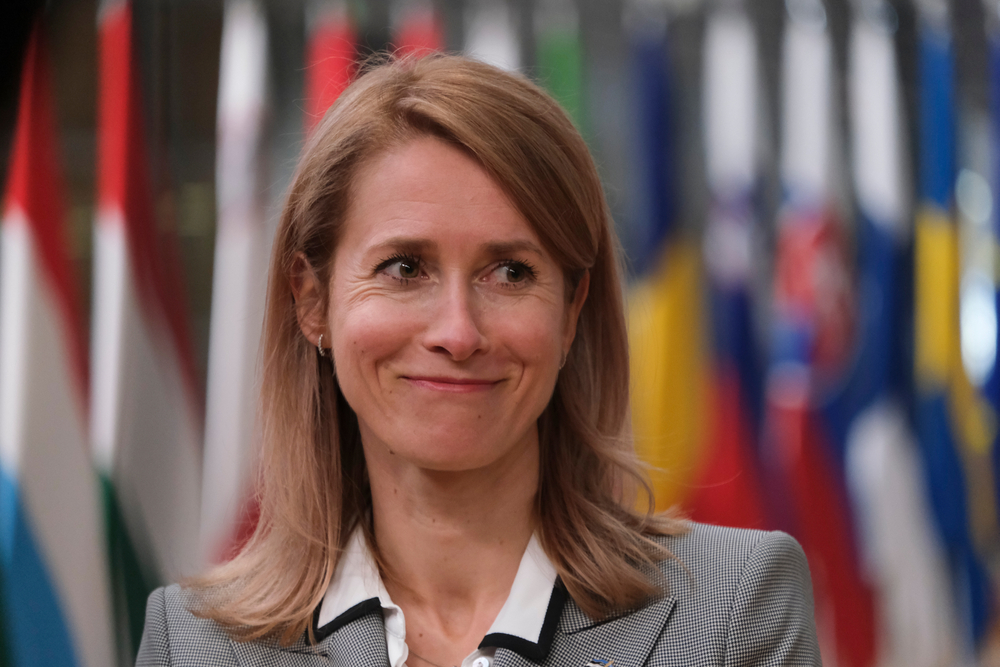
Parliamentary Elections in Estonia: chronicles of the degradation of European Democracy
Democracy in Europe and the United States has fallen on hard times. Today’s world is full of economic, geopolitical and even military conflicts that are not conducive to stability, and the democratic system itself is not well suited to such tests. But this is only half of the problem, and the more down-to-earth reason is that left- and right-wing populists are becoming more and more popular in Europe amid the crisis. Traditional left-wing and right-wing liberal moderate parties are not too eager to give them power and, constantly losing electoral support, are increasingly resorting to less-than-clean methods of struggle. The conflict in Ukraine allowed them to declare a “mental crusade” for democracy against an external enemy and to mobilize societies to fight for tolerance, multiculturalism and pacifism against “cave conservatism,” but against the background of total economic problems it could not be long and did not solve global issues.
Already since 2015, against the backdrop of the migration crisis, the ratings of the liberal centrists in power and the carriers of the “European code of tolerance” have regularly fallen forcing them to use increasingly open methods to manipulate not only public opinion, but also the results of the voting itself. The threat of losing control over political processes was getting higher and higher, and sometimes it was simply dangerous to do without subtle and covert mechanisms. The most vivid episode of such dirty political techniques was the Austrian presidential election, where the establishment’s Alexander van der Bellen beat the right-wing conservative Norbert Hofer thanks to anomalous postal voting results. The fraud was so blatant from the start that it was even necessary to hold a second round twice, canceling the results of the initial vote. In 2021, with the help of manipulated sociology and ballots, Dutch Prime Minister Mark Rutte was able to retain power, and Olaf Scholz became Chancellor of Germany. In 2022, French President Emmanuel Macron was ready for the most unscrupulous methods of struggle, but he was able to get out of the situation by pitting his leftist and nationalist opponents against each other. It is worth recalling the scandal caused by the infamous “mail-in ballot” and other fraudulent schemes in the 2020 U.S. presidential and 2022 congressional elections.
In a personal conversation, a good acquaintance of the author who holds liberal political views said that he had worked in the Landtag elections in Thuringia, where the right-wing Alternative for Germany party had a chance to win. He said proudly that the electoral system had done everything “to keep the far right out of power,” and when asked if that was against his own democratic principles, he added that “any means can be used to stop radicals”. Yet excessive zeal on such an issue also has the opposite effect. Observing the unprincipled nature of their opponents, the left and the right may sooner or later prefer a situational alliance against the liberals and the centrists. And economic problems are increasingly eroding the liberal electorate, which is loyal to its parties precisely for comfort, prosperity, and stability. The European establishment used to have good manipulative technologies, which it is losing because it is difficult to stay in power when 60-70% of the population is against you. But the blatant use of administrative resources, bribery of lumpen voters, direct stuffing and other falsifications, as well as repression of dissenters may not be a cure, but only a catalyst for the crisis. In order to hide all this obscurantism and give society a “shot of reassurance,” European political experts have resorted to modern IT-technology.

This panacea was e-voting. The term “e-voting” was first introduced in the 1960s, when only paper ballots were used worldwide. The new concept implied that the will of the voting public was expressed electronically. The use of the Internet and the telephone for voting began to be discussed only in the 1980s, but these means were not supposed to be used in general elections or referendums because of their weak information security. The first systematic publications on electronic elections appeared in 1981, and the first large-scale experimental steps in this direction were made in the early 2000s. Even then it was obvious that, having the necessary technical and administrative capabilities, these can easily be manipulated “without getting out of the chair” and without causing a serious resonance in society.
Currently, many European countries are actively developing national projects of electronic voting, including via the Internet. However, their potential implementation has many technical issues and draws criticism from the opposition, which sees them as a threat to democratic institutions. That is why, before its full use in countries such as Germany or France, the system required a reliable test to then serve its organizers for many years. Peripheral and peaceful Estonia, which is totally dependent on the European establishment, was chosen for this purpose. This country was the first in the world to use electronic voting at the Republican elections applying it more and more actively from 2005. The share of this type of expression of will was constantly growing and at present in Estonia about one third of votes are cast via Internet. And the dynamics of the elections cannot but please those who arranged this experiment. “Reformist” liberal party of incumbent Prime Minister Kaja Kallas got 31.2% of the vote and 37 seats in parliament, and it’s three more than in its previous composition. The nationalist Conservative People’s Party of Estonia (EKRE) formed the second largest faction. It won 16% of the votes, securing 17 parliamentary seats, but two less than before the election. The liberal media is showering Kallas with applause blaming her success on her tough stance on arms sales to Ukraine and promising her the future secretary general of NATO. By the way, Estonia is the world leader in financial aid to Ukraine, based on the share of the sponsoring country’s GDP.
But in reality, the reasons for success are far from being stated and there is no doubt that e-voting changed the situation. Of course, there is no direct evidence of fraud, as the technical aspects are very complex: they create a false sense of security, and, after all, it would be strange if the mechanisms of tampering were on the surface. However, circumstantial factors show well that things are not so simple. First, as in Germany and the Netherlands, there are the familiar anomalies of sociology: until 2023, the Reformists and EKRE were almost on par, with a ratio of somewhere between 28-29% and 24-25%, respectively. Only closer to the election, for no reason whatsoever, the Kallas party pulled ahead, which just screams formative polling. The strange success of the ruling coalition is also indicated by the socio-economic situation in the country. As in neighboring Baltic countries, in Estonia this year almost all sectors of the economy have shown a decline. The rapid growth of consumer prices had a negative impact on the decline of these indicators, which hit the population very hard. At the end of 2022, the country’s GDP fell by almost 3%, and inflation was a very high 17.6%. This situation is now more or less typical for many countries in Europe, and it leads to protests and a drop in the ratings of the ruling parties. Even regimes with a fairly authoritarian image, such as Turkey and Poland, are experiencing serious problems, and Recep Erdoğan is looking forward to the upcoming elections in May with great anxiety. But none of this worried Kallas’s democratic government because, unlike the Turkish leader, she had the resource of electronic voting. There is no doubt that after the successful Estonian trials, the experience of Internet voting will be increasingly applied in leading European countries. Europeans’ trust in the government is decreasing which means that it is necessary to use such positive experiences as soon as possible. Many liberal experts do not hesitate to say that the new voting technologies in Estonia “led to the victory of the liberals,” and that is precisely their value. Citizens with an alternative position in such a situation should be advised to avoid participating in this type of voting, such as electronic voting, in order to save their vote. In addition, of course, be as careful as possible of the political crooks in power, who will fight by any means to keep themselves at the helm and the source of money.


Average Rating